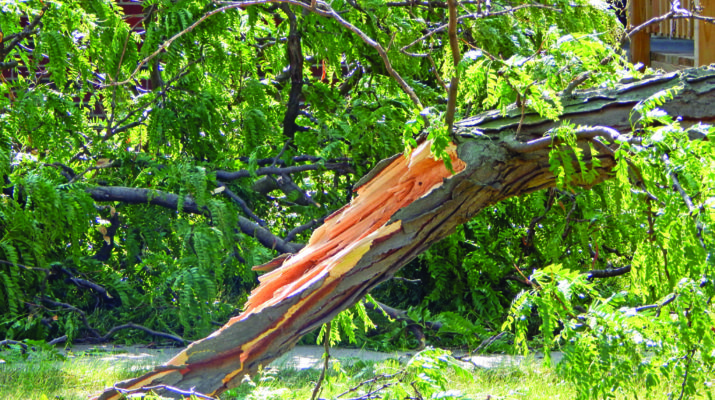On Sept. 6, President Joe Biden issued a major disaster declaration for many counties in the state, including Box Butte County, in response to severe thunderstorms that impacted Nebraska on July 9 and 10.
The declaration allows federal funds to flow to portions of the state that saw the most damage through the Hazard Mitigation Grant Program. Other counties cited in the declaration include Cass, Clay, Douglas, Fillmore, Grant, Hall, Hamilton, Madison, Sarpy, Saunders, Sheridan, Washington and York.
On July 9, Box Butte County witnessed two rounds of heavy storms that caused damage to windows, roofs and vehicles. According to Matthew Brothers, Meteorologist with the National Weather Service in Cheyenne, the storm was significant in scale compared to others in recent history.
“I believe the largest hail size that we got a report of was 4.25 inches in diameter,” said Brothers. “That was 12 miles southeast of Hemingford. That was with the first round that was around 5:30 p.m. We got many other reports of not-as-large, but still pretty significant-size hail, as well as going through Alliance, we got a lot of pictures of at least baseball-sized hail that broke a lot of windows on houses as well as cars in town.”
Strong winds were also a factor, with the Alliance Airport recording a gust of 88 mph.
The Nebraska congressional delegation and Governor Pete Ricketts requested that President Biden issue the declaration following the storm. Governor Ricketts cited damage to the state’s electrical grid from the hail and wind.
“At one point, approximately 200,000 customers or 37% of the state was without power. This event caused Omaha Public Power District’s largest power outage in history,” Governor Ricketts wrote.
The congressional delegation, including Senator Deb Fischer, Senator Ben Sasse, Congressman Adrian Smith, Congressman Jeff Fortenberry and Congressman Don Bacon, cited heavy damage to crops in their letter to President Biden asking for the declaration.
“Significant crop damages were also reported, including to corn, soybean, wheat, sunflower and alfalfa crops, which will likely have a long-term adverse effect on our state’s economy,” they wrote in a letter to President Biden dated Aug. 23. “A preliminary damage assessment has estimated costs totaling $30,862,617.”

